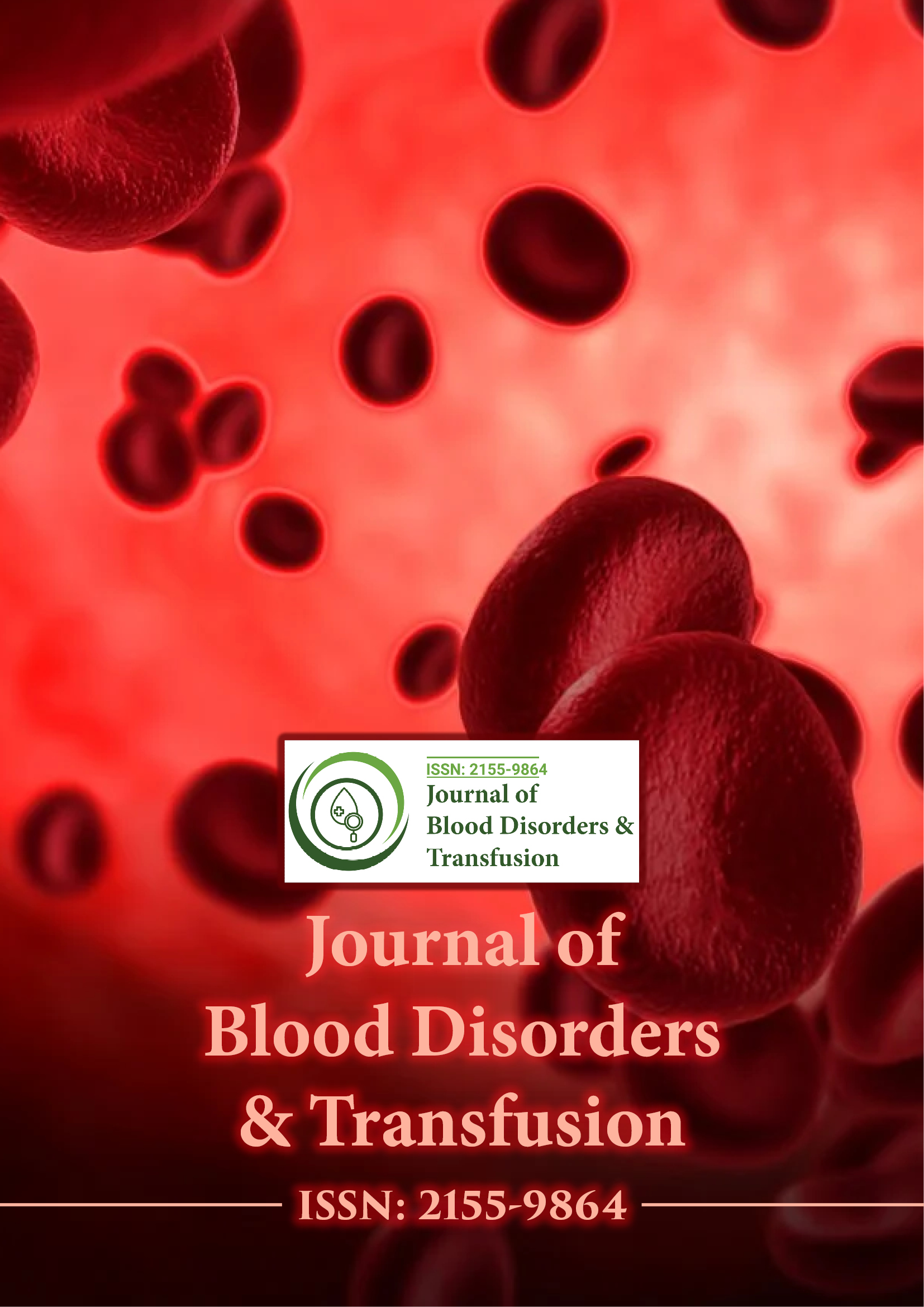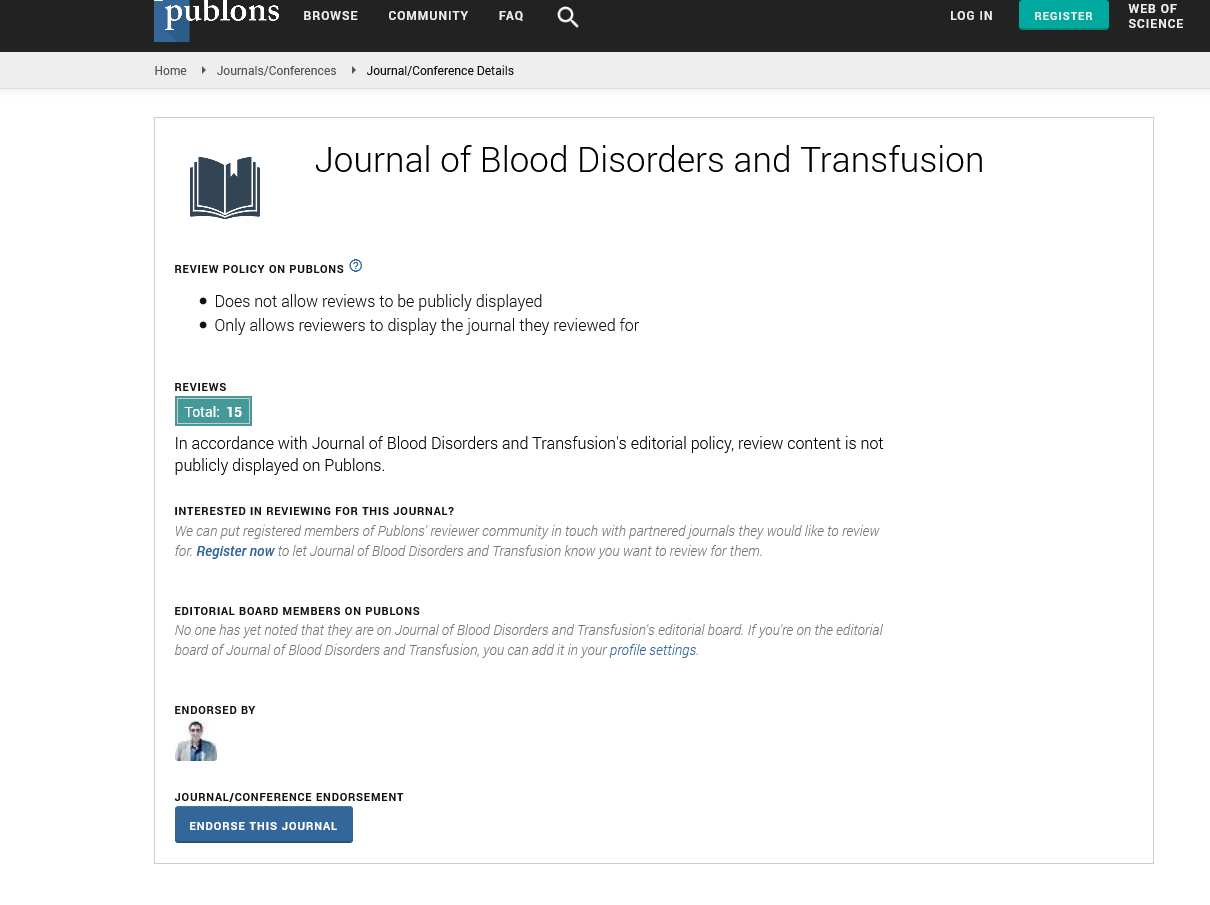Indexed In
- Open J Gate
- Genamics JournalSeek
- JournalTOCs
- Ulrich's Periodicals Directory
- RefSeek
- Hamdard University
- EBSCO A-Z
- OCLC- WorldCat
- Proquest Summons
- Publons
- Geneva Foundation for Medical Education and Research
- Euro Pub
- Google Scholar
Useful Links
Share This Page
Journal Flyer

Open Access Journals
- Agri and Aquaculture
- Biochemistry
- Bioinformatics & Systems Biology
- Business & Management
- Chemistry
- Clinical Sciences
- Engineering
- Food & Nutrition
- General Science
- Genetics & Molecular Biology
- Immunology & Microbiology
- Medical Sciences
- Neuroscience & Psychology
- Nursing & Health Care
- Pharmaceutical Sciences
Plasmodium parasitaemia among blood donors in Sokoto, North Western Nigeria
2nd International Conference on Hematology & Blood Disorders
September 29-October 01, 2014 DoubleTree by Hilton Baltimore-BWI Airport, USA
Erhabor Osaro, Usman I, Abdulrahaman Y, Kweifa I, Abubakar AW, Buhari H and Adias TC
Scientific Tracks Abstracts: J Blood Disorders Transf
Abstract:
Atotal of 150 consecutively recruited blood donors aged18 to 65 years and mean 27.4?6.6 years were tested for transfusion ?transmissible malaria, infection. Out of the blood donors test, 55 (36.7%) tested positive for Malaria. The prevalence of malaria was compared based on the ABO blood group of blood donors. The prevalence of Malaria was significantly higher among group O donors 35 (64%) followed by group B 11(20%) followed by group A 8(14.6) and group AB 1 (2%). The prevalence of malaria was stratified based on the gender of donors. Out of 150 blood donors tested, 133 (88.7%) were male while 17 (11.3%) were female. The prevalence of malaria was significant higher among male donors 48 (87.3%) compared to female donors 7(12.7%) (p=0.001). The prevalence of malaria was stratified based on the age group of donors. The prevalence of malaria was significantly higher among donors in the 18-28 and 59-68 years age group. The prevalence of malaria was stratified based on the marital status of donors. Plasmodium falciparum was responsible for all cases of malaria infection among donors. The prevalence of malaria was significantly higher among married subjects; 37(62.3%) compared to single subjects 18(37.7%) (p=0.01). The prevalence of malaria was stratified based on the occupational groups of donors. Out of 150 blood donors tested, 48 (32%) were farmers, 24(16%) were traders, 35 (23.3%) were civil servants and 43 (28.7%) were students. The prevalence of malaria was significantly higher among farmers 21(38.2%) (p=0.01). The prevalence of malaria was stratified based on the occupational groups of donors. The prevalence of malaria was significantly higher among family replacement donors 50(90.9%) compared to voluntary non-remunerated donors 5(9.1%) (p=0.001). This present study indicates a high prevalence of malaria among blood donors studied. It may be justifiable for recipients of blood transfusion particularly neonates, children and pregnant women in our malaria-endemic environment to be routinely treated with anti-malarial drugs as a prophylactic measure. We advocate for a mandatory universal donor screening policy for malaria, for exclusion of blood donors with plasmodia parasitaemia to further enhance blood safety.
Biography :
Erhabor Osaro is an Associate Professor of Haematology and Transfusion Medicine in Usmanu Danfodiyo University, Sokoto, Nigeria. He is a Chartered Scientist and Fellow of the Institute of Biomedical Science of London. He holds a Doctor of Philosophy degree in Immunohematology from the Rivers State University of Science and Technology Rivers State, Nigeria. His teaching experience spans both the African continent and Europe. He is a recipient of several awards including the famous British Blood Transfusion Society Young Scientist Award and the Margaret Kenwright Young Scientist Award. He is the author of 4 scientific books and 5 chapters of scientific books. He is a member of the editorial board as well as an article reviewer of several international scientific journals and a well published contributor with more than 100 published articles in the field of infectious diseases, occupational health, immunohaematology and transfusion medicine.

